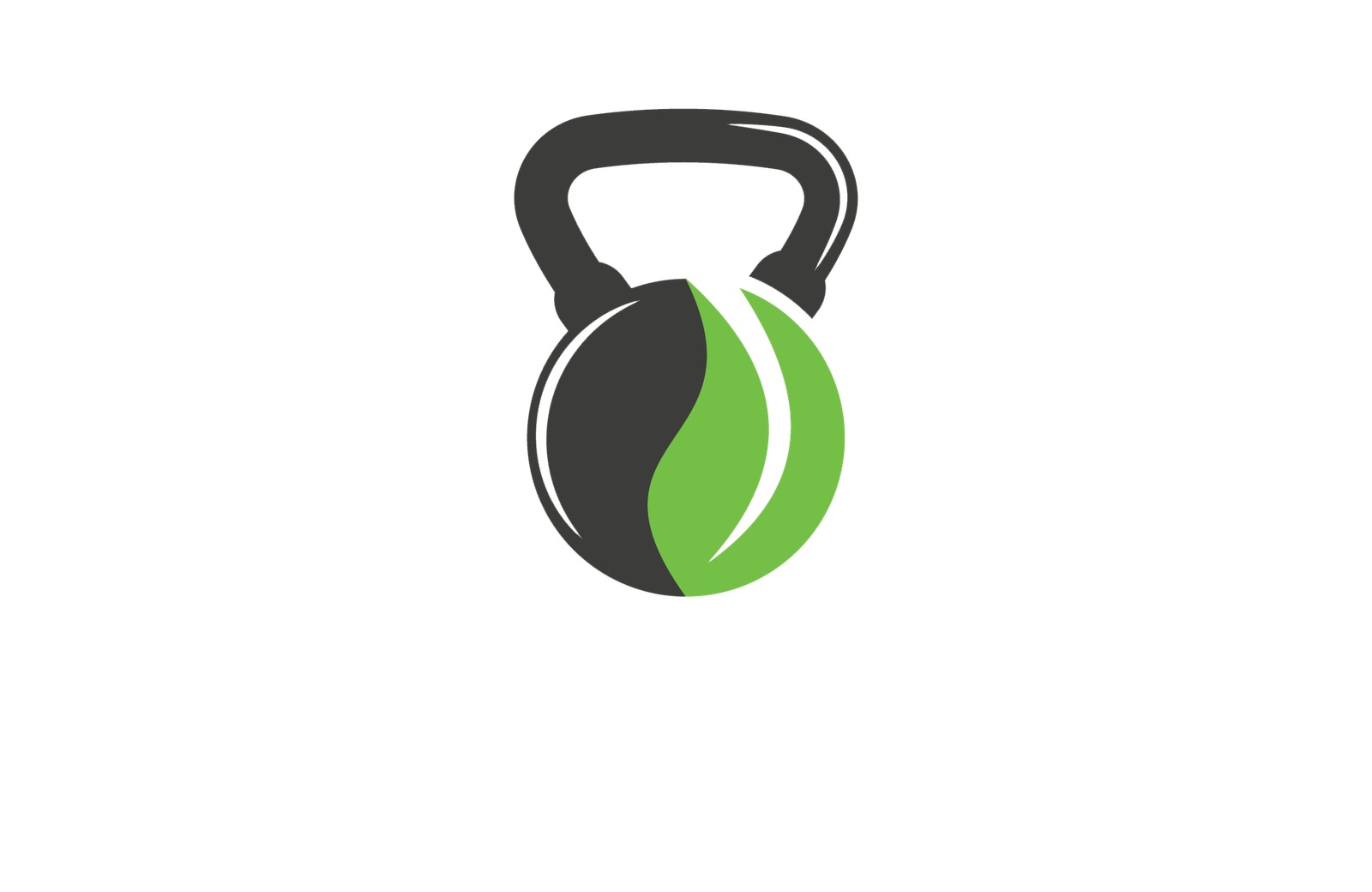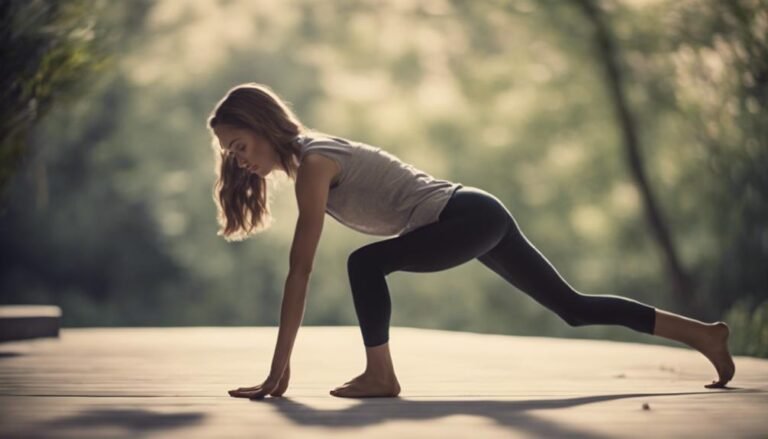Don't miss our holiday offer - 20% OFF!

Safe Stretching Practices Before and After Workouts
Improve your workout performance and reduce injury risk by mastering the art of safe stretching practices before and after exercise.
We prioritize safe stretching practices before and after workouts to optimize our performance, prevent injuries, and accelerate recovery. Before a workout, we focus on dynamic stretching to prepare our muscles for physical activity, while static stretching helps improve flexibility. We target key muscle groups like hamstrings, hip flexors, and lower back to reduce the risk of injury. After a workout, we cool down with a mix of static and dynamic stretching to reduce muscle soreness and improve flexibility. By following these practices, we can take our fitness journey to the next level – and there's more to explore on our path to peak performance.
Key Takeaways
- Prioritize proper pre-workout stretching to avoid injuries, improve performance, and increase flexibility.
- Incorporate dynamic stretching before workouts to prepare muscles for physical activity and reduce injury risk.
- Focus on key muscle groups like hamstrings, hip flexors, lower back, core, and glutes to optimize athletic performance.
- Avoid overstretching injuries by listening to your body, stretching within a comfortable range, and avoiding bouncing or forcing.
- Incorporate post-workout cool-down routines, including static and dynamic stretching, to reduce muscle soreness, improve flexibility, and promote recovery.
Pre-Workout Stretching Essentials
Before we begin our workout, we need to prioritize proper pre-workout stretching to prevent injuries and optimize performance. We can't stress enough how vital it is to get this right. As we prepare to stretch, we make sure to wear proper attire that allows for a full range of motion. No restrictive clothing or shoes that might hinder our flexibility. Next, we focus on mindful breathing, taking slow, deep breaths to calm our minds and relax our muscles. This helps us get into the right mindset and reduces the risk of injury. By taking these essential steps, we set ourselves up for a safe and effective workout. We're not just going through the motions; we're being intentional about our preparation. By prioritizing proper pre-workout stretching, we can avoid common mistakes that can lead to injuries and confirm we get the most out of our exercise routine.
Dynamic Stretching for Warm-Up
We kick off our dynamic stretching routine with leg swings, arm circles, and hip rotations, gradually increasing our heart rate and flexibility as we shift into our workout. This type of stretching prepares our muscles for physical activity, reducing the risk of injury and improving overall performance. As we age, our flexibility and range of motion naturally decrease, making dynamic stretching even more essential for older adults.
When designing a dynamic stretching routine, we consider our sport-specific needs. For example, runners may focus on leg swings and high knees, while swimmers may incorporate arm circles and shoulder rolls. We also take age into account, adapting our routine to accommodate any physical limitations or health concerns.
- Improved flexibility: Dynamic stretching increases our range of motion, allowing for more efficient movement.
- Injury prevention: Preparing our muscles for exercise reduces the risk of strains and pulls.
- Enhanced performance: Dynamic stretching boosts power, speed, and overall athletic performance.
- Warm-up efficiency: This type of stretching quickly raises our heart rate, preparing us for intense physical activity.
Static Stretching for Flexibility
By incorporating static stretching exercises into our fitness routine, we can improve flexibility and reduce muscle tension, allowing for more efficient movement and enhanced overall performance. This type of stretching is particularly effective in addressing muscle imbalances, where some muscles are overactive and others are underactive. By focusing on static stretches that target these imbalances, we can promote more balanced muscle development and reduce our risk of injury.
It's essential to approach static stretching with caution, as overstretching can lead to decreased strength and power. We should aim to hold each stretch for 15-30 seconds and avoid bouncing or forcing beyond a comfortable range of motion. Additionally, we should be patient and consistent with our stretching routine, as flexibility gains can take time to develop. It's common to plateau at some point, but with persistence and adjustments to our stretching routine, we can continue to make progress and avoid flexibility plateaus. By incorporating static stretching into our fitness routine, we can optimize our flexibility and overall athletic performance.
Key Muscle Groups to Focus
When incorporating static stretching into our fitness routine, it's important to prioritize key muscle groups that tend to be tight and restricted, such as our hamstrings, hip flexors, and lower back. These areas tend to be prone to tightness and restriction, which can impede our performance and increase our risk of injury.
To verify we're targeting the right areas, let's focus on the following key muscle groups:
- Hamstrings: Tight hamstrings can lead to poor posture, lower back pain, and decreased athletic performance.
- Hip Flexors: Tight hip flexors can cause hip and lower back pain, and even lead to issues with our knees and ankles.
- Lower Back: A strong, flexible lower back is essential for maintaining good posture, reducing back pain, and enhancing our overall athletic performance.
- Core and Glutes: Building core strength and activating our glutes can help improve our posture, reduce our risk of injury, and enhance our overall athletic performance.
Avoiding Overstretching Injuries
As we explore the importance of avoiding overstretched injuries, we'll focus on key strategies to maintain our stretching practices remain safe and effective. We'll discuss how to know our limits, stretching within a comfortable range, and avoiding the temptation to bounce back, all of which are vital in preventing injuries. By following these principles, we can confidently stretch our way to improved flexibility and overall well-being.
Know Your Limits
How far can we push our bodies before we risk injury, and what signs should we watch out for to avoid overstretching? As we strive to improve our flexibility and range of motion, it's essential to know our limits and listen to our body's signals. Mindful awareness and body intelligence are crucial in preventing overstretching injuries.
We need to be aware of our body's warning signs, such as:
- Sharp pain: If we experience sharp pain or discomfort while stretching, it's a sign to stop and reassess.
- Muscle trembling: If our muscles start to tremble or shake, it's a sign of fatigue and potential injury.
- Numbness or tingling: If we experience numbness or tingling sensations in our limbs, it may indicate nerve compression or irritation.
- Dizziness or lightheadedness: If we feel dizzy or lightheaded during or after stretching, it's a sign that we may be pushing ourselves too hard.
Stretching Within Range
We must learn to stretch within our comfortable range, recognizing that each of us has a unique flexibility threshold that should never be exceeded. When we push past our limits, we risk injury, pain, and decreased flexibility in the long run. To avoid this, we need to focus on proper alignment and mindful movement during our stretching routine.
As we stretch, we should maintain proper alignment to avoid putting unnecessary stress on our joints. This means engaging our core, keeping our shoulders relaxed, and avoiding arching our backs. By doing so, we can target the specific muscle groups we're trying to stretch without compromising our overall posture.
Vital movement is also essential in preventing overstretching injuries. We should move slowly and deliberately into each stretch, listening to our bodies and honoring their limitations. If we feel any sharp pain or discomfort, we should stop immediately and reassess our position. By being mindful of our movements, we can confirm that we're stretching within our comfortable range and avoiding potential injuries.
Don't Bounce Back
By recognizing our individual flexibility thresholds and respecting our bodies' limits, we've taken the first step in preventing overstretching injuries, and now it's time to tackle another common pitfall: bouncing back. When we bounce back into a stretch, we risk pushing our muscles beyond their capacity, leading to strains and tears. To avoid this, we need to focus on slow, controlled movements and listen to our bodies' signals.
Here are some key reminders to help us avoid bouncing back:
- Hold each stretch for 20-30 seconds to allow for proper relaxation of the muscle.
- Breathe naturally and smoothly, avoiding jerky or forced breathing patterns.
- Focus on muscle relaxation, rather than trying to force our way into a deeper stretch.
- Don't push past pain or discomfort, as this can be a sign of overstretching.
Post-Workout Cool-Down Routine
After a vigorous workout, our bodies need a gradual wind-down to prevent muscle strain and promote recovery, making a post-workout cool-down routine an essential part of our exercise regimen. We've pushed ourselves hard, and now it's time to give our bodies a break. A well-structured cool-down helps our bodies shift from an intense physical state to a resting state, reducing the risk of injury and muscle soreness.
Incorporating relaxation techniques into our cool-down routine can work wonders for our mental and physical well-being. Deep breathing exercises, meditation, or yoga can help calm our minds and slow down our heart rates. Additionally, gentle stretching exercises can aid in muscle recovery by increasing blood flow and reducing muscle tension. We should focus on static stretches that hold our muscles in a lengthened position for 15-30 seconds, allowing for maximum relaxation. By prioritizing a post-workout cool-down, we're giving our bodies the TLC they need to recover, rebuild, and come back stronger for our next workout.
Reducing Muscle Soreness Techniques
Reducing Muscle Soreness Techniques
How can we alleviate the dreaded delayed onset muscle soreness (DOMS) that often accompanies intense exercise, and what techniques can we employ to reduce its debilitating effects? As it is commonly experienced, DOMS can be a major obstacle to our fitness journey, making it difficult to recover and get back to our regular exercise routine. Fortunately, there are several techniques that can help alleviate DOMS.
- Massage Therapy: Massage can increase blood flow and break down adhesions, helping to reduce muscle soreness.
- Cold Showers: Taking a cold shower after a workout can help reduce inflammation and alleviate muscle soreness.
- Proper Hydration: Drinking plenty of water can help flush out toxins and reduce muscle soreness.
- Active Recovery: Engaging in low-intensity cardio activities, such as cycling or swimming, can promote blood flow and aid in recovery.
Improving Flexibility With Foam Rolling
We can further optimize our recovery and flexibility by incorporating foam rolling into our routine, which helps to release tension in our muscles and improve range of motion. Foam rolling is a self-myofascial release technique that involves using a foam roller to apply pressure to specific areas of the body. This helps to break down adhesions and scar tissue, promoting blood flow and reducing muscle soreness.
| Foam Techniques | Rolling Exercises |
|---|---|
| Slow Rolling | Quads and Hamstrings |
| Trigger Point | IT Band and Calves |
| Pulsing | Lower Back and Glutes |
When using foam rolling, you must focus on specific areas of tension and roll slowly and deliberately. We should aim to hold each position for 30-60 seconds, breathing deeply and relaxing into the pressure. By incorporating foam rolling into our routine, we can improve our flexibility, reduce muscle soreness, and enhance our overall performance. Remember to listen to our bodies and adjust the pressure and speed according to our comfort level.
Stretching for Common Injuries
Most of us have experienced common injuries like shin splints, runner's knee, or plantar fasciitis, and incorporating targeted stretches into our routine can help alleviate these issues. By focusing on specific areas prone to injury, we can reduce the risk of chronic pain and improve overall injury prevention.
Here are some key areas to focus on:
- Calf stretches for shin splints and plantar fasciitis
- Quad and hamstring stretches for runner's knee
- IT band stretches for iliotibial tract syndrome
- Glute and hip flexor stretches for lower back pain and hip issues
Creating a Personalized Stretching Plan
As we create a personalized stretching plan, we'll start by identifying our specific goals, whether that's improving flexibility, reducing injury risk, or enhancing athletic performance. Next, we'll set realistic expectations for ourselves, acknowledging our current fitness level and the time we can commit to stretching each week. By customizing our routine to our unique needs and limitations, we'll be more likely to stick with it and see long-term benefits.
Identify Your Goals
To create a personalized stretching plan, let's define our goals and identify the specific areas of our bodies we want to target. As we embark on this fitness journey, it's essential to establish a clear understanding of our fitness philosophy. What do we want to achieve through stretching? Are we looking to improve flexibility, reduce injury risk, or enhance overall performance? By setting specific, measurable, and attainable goals, we can create a focused plan that addresses our unique needs.
To help us get started, let's consider the following key areas to target:
- Injury prevention: Identifying areas prone to injury, such as hamstrings or lower back, to develop targeted stretches.
- Performance enhancement: Focusing on stretches that improve power, speed, or endurance in our chosen sport or activity.
- Flexibility and range of motion: Increasing flexibility in specific joints or muscle groups to improve overall mobility.
- Post-workout recovery: Developing stretches to aid in recovery, reduce muscle soreness, and promote relaxation.
Set Realistic Expectations
Creating a personalized stretching plan requires us to set realistic expectations about what we can achieve and how long it'll take to get there. We need to be mindful of our goals and the time it takes to reach them. Setting unrealistic expectations can lead to frustration and disappointment, which can ultimately deter us from sticking to our plan.
To set realistic expectations, let's consider the following factors:
| Goal | Timeframe | Milestones |
|---|---|---|
| Increase flexibility | 6-8 weeks | Hold stretches for 30 seconds, 3 times a week |
| Reduce muscle soreness | 4-6 weeks | Reduce soreness by 20% after 2 weeks |
| Improve range of motion | 8-12 weeks | Increase range of motion by 10% after 6 weeks |
Customize Your Routine
We tailor-make our stretching routine by identifying our specific flexibility needs, pinpointing the muscle groups that require the most attention, and incorporating exercises that target those areas. This personalized approach helps us maximize the effectiveness of our stretching routine and guarantees we're not wasting time on unnecessary exercises.
To create a well-rounded routine, we consider the following key factors:
- Current fitness level: We assess our current flexibility and mobility to determine which areas need improvement.
- Daily habits: We take into account our daily activities and identify areas that may be prone to strain or injury.
- Morning routine: We incorporate stretching exercises into our morning routine to improve flexibility and set a positive tone for the day.
- Injury prevention: We focus on exercises that target areas prone to injury, such as hamstrings and lower back muscles.
Making Stretching a Habit
By incorporating stretching into our daily routines, we can make it a sustainable habit that brings long-term benefits to our overall health and flexibility. To do so, we need to prioritize consistency and make stretching a non-negotiable part of our daily routine. One effective way to achieve this is by incorporating stretching into our morning routine. We can start by setting aside 10-15 minutes each morning to stretch, focusing on major muscle groups like our hamstrings, quadriceps, and hip flexors. By doing so, we'll not only improve our flexibility but also boost our energy levels and set ourselves up for a productive day. A consistency mindset is key here – we shouldn't try to cram all our stretching into one or two intense sessions a week, but rather aim for shorter, more frequent sessions that become an ingrained habit. By making stretching a habit, we'll be more likely to stick to it and reap the rewards of improved flexibility, reduced injury risk, and enhanced overall well-being.
Frequently Asked Questions
Can Stretching Before Bed Improve the Quality of My Sleep?
We find that stretching before bed can indeed improve our sleep quality by promoting relaxation techniques, enhancing sleep hygiene, and reducing muscle tension, leading to a more restful and rejuvenating sleep experience.
How Often Should I Stretch to See Noticeable Flexibility Gains?
As we weave a tapestry of flexibility, we're curious about the frequency of stretching to achieve noticeable gains. We've found that consistency matters; aiming for 3-4 times a week, with 2-3 sets per muscle group, yields tangible results.
Can I Stretch With Weights or Resistance Bands for Extra Benefit?
We're considering weighted stretching; using weights or resistance bands can enhance flexibility gains through Weighted Mobility and Resistance Flexibility exercises, but we must proceed cautiously to avoid injury, as added resistance increases the risk.
Is It Better to Stretch in the Morning or Evening for Flexibility?
We consider our schedules, opting for morning stretching to boost our daily flexibility and energy, or evening relaxation to unwind and rejuvenate our muscles, but ultimately, consistency trumps timing.
Can Stretching Help Alleviate Chronic Stress and Anxiety?
We find that stretching can indeed help alleviate chronic stress and anxiety by increasing mental clarity and promoting emotional regulation, allowing us to better cope with life's challenges and feel more grounded in our daily lives.
Conclusion
As we flex and fold, we find flexibility flourishing. By prioritizing safe stretching practices before and after workouts, we pave the way for peak performance and prevent pesky injuries. By incorporating dynamic and static stretches, foam rolling, and personalized plans, we foster a flexible foundation for fitness. So, let's make stretching a sacred habit, syncing body and mind in perfect harmony.



